
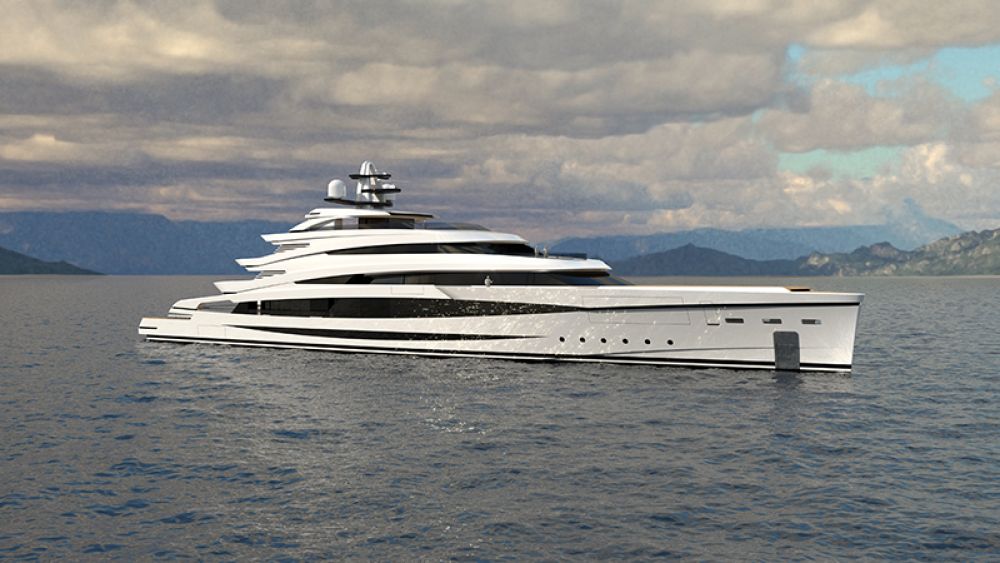
The very distinctive lines of this sports superyacht designed by Tomaso Spadolini could well make one forget that it is a 90-metre yacht.
Capable of speeds of over 20 knots, this yacht, in keeping with the owner's wishes, was also designed to offer its guests the impression of being in close contact with the sea, despite its size.
The second vital requirement expressed by the owner was to ensure total privacy for both guests and the crew. To comply with this request, Spadolini pushed the concept to the extreme by creating a deck entirely dedicated to the owner, with equally private access.
Two stairways and an elevator enable guests to reach the sundeck from the main deck, including an outdoor stairway, so that the serenity of the deck entirely reserved for the owner is not disturbed. It is comprised of a gigantic suite with a 270° view towards the bow, His and Hers bathrooms, two walk-in closets, a wine cellar, a smoking lounge with a humidor, and a private sitting-room. An outdoor lounge area in front of the swimming pool completes the layout of this deck.
Sliding doors in the lobby and pantry allow for the owners' suite to be completely isolated.
The curved lines sloping gently towards the stern meet the request for a feeling of being close to the sea, which is also true of the beach club occupying the rear of the main deck and that of the lower deck. The 7 x 3 metre infinity pool offers bathers an unimpeded view of the sea. A lounge of 150 sq.m (1,615 sq.ft) is accompanied by a bar, gym, sauna, and a relaxation area.
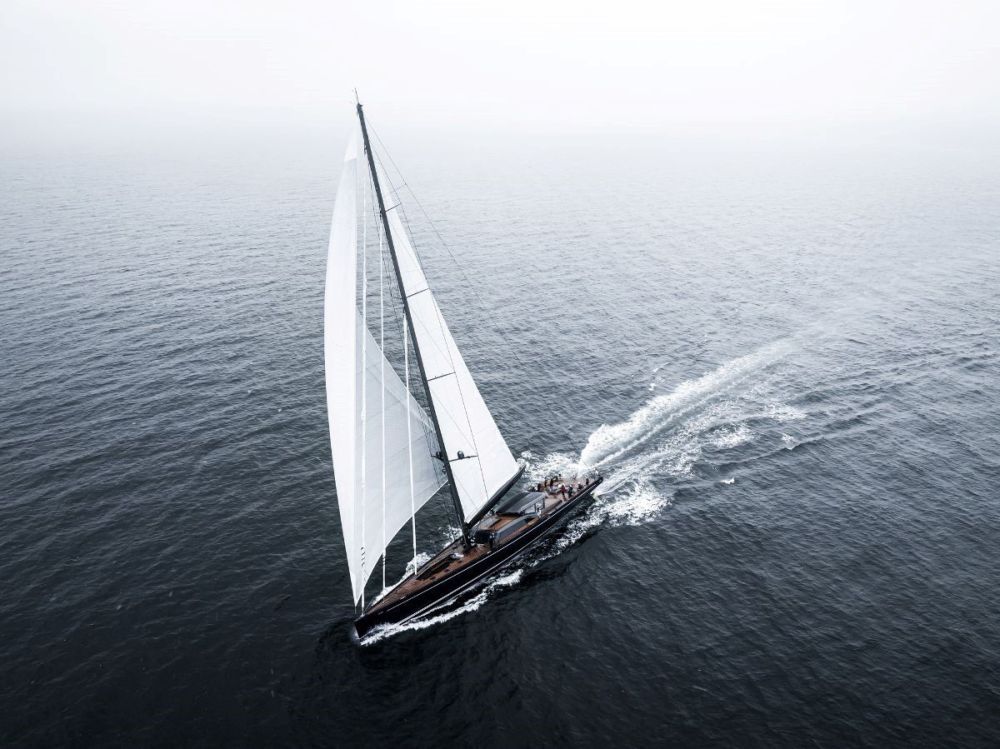
To meet the request of its client wanting to cruise with the lightest and fastest large sailing yacht possible, Nauta Design called upon Royal Huisman and architects Reichel-Pugh.
Royal Huisman has, in fact, just perfected its patented "Featherlight" construction method enabling an 11 % decrease in overall weight as compared to typical aluminium construction. The global approach of this method is to pinpoint the project's tiniest details allowing for reductions in weight.
The deck and superstructures are thus made of carbon, along with the mast and sail rigging designed by Rondal to reduce drag. The owner and all the participants do not hide their satisfaction in having designed and built the lightest and most powerful yacht for this size (47metres), thus opening up the path to superyachts of very high performance.
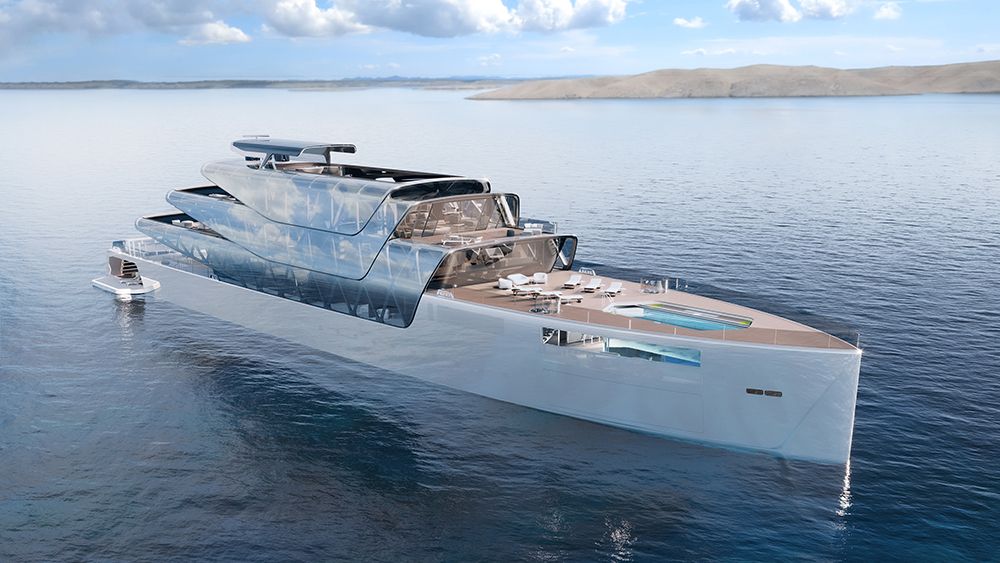
Revolutionary, to say the least, this concept took shape in the mind of Jozeph Forakis while daydreaming on a Greek beach. The view of clouds floating above the waterline but leaving no negative visual impact led him to reflect upon, and design, a yacht endowed with the same virtues.
To make the 88-metre yacht "virtually invisible", the architect used robotic 3D to create a mesh framework integrating both hull and superstructure. To maintain direct contact with surrounding nature, he designed superstructures comprised of multi-tiered, ephemeral glass wings reflecting the clouds and sky. These glass wings also contribute towards the production of clean energy thanks to solar panels generating electricity and electrolyzers extracting H2 from sea water.
The electricity is stored in Li-ion batteries to power the propulsion pods and all instruments, as well as the many appliances and systems required for living on board. As for the yacht's interior, the elegant interlacing forming the superstructure allows light to enter abundantly, offering its occupants a 300° view and a guarantee of privacy thanks to mirrored glass.
In homage to nature, the centerpiece is comprised of the magnificent "Tree of Life" emerging from a pool,surrounded by a hydroponic Zen garden on the lower deck, and rising upwards through all four levels. In this environment worthy of a Garden of Eden, guests are provided with fresh food and air purification from a source of living nature.
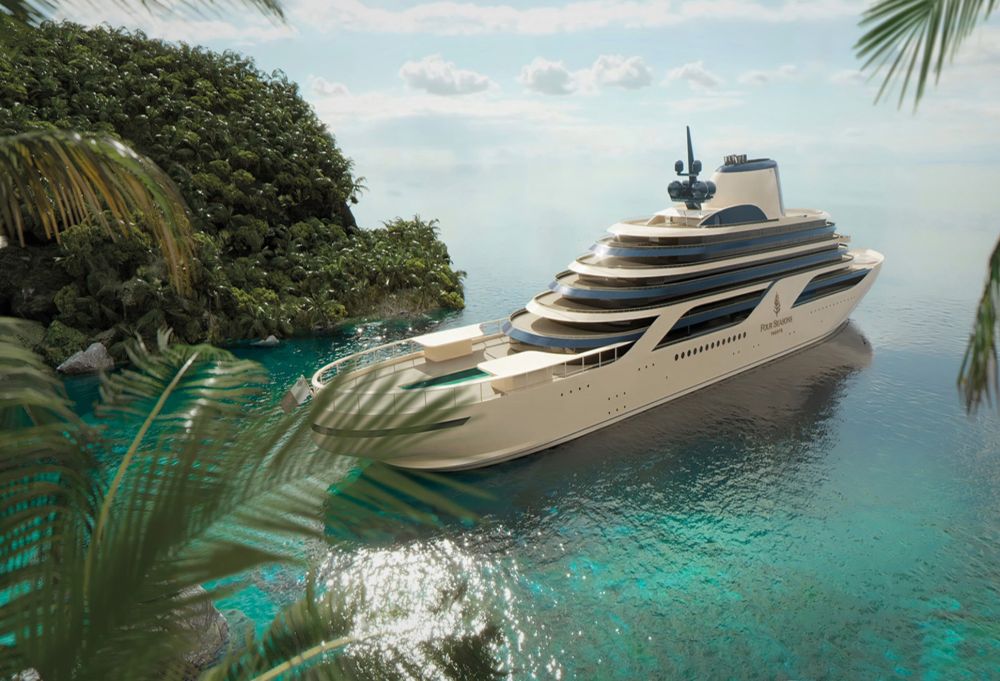
The success encountered by cruise organizers has led Swedish designer Tillberg to conjure up a voyager boasting all the assets of liners transposed to a 207-metre megayacht.
At the request of the "Four Seasons" luxury hotel group, Tillberg Design has presented a yacht whose design borrows inspiration from the legendary Christina O owned by Aristotle Onassis.
For the "Four Seasons Yacht", the Hot Lab studio, renowned for yacht interiors of refined luxury, has created amenities blending stylishness with guest-centric design.
The superyacht will propose 95 suites shared out over 14 decks, and the rear deck will host a 20-metre pool whose base can be raised to become a dance floor or reception area.
This project confirms the strong trend for modern yachting and the preponderant place occupied by luxury yacht-liners. Fincantieri has been entrusted with its construction.
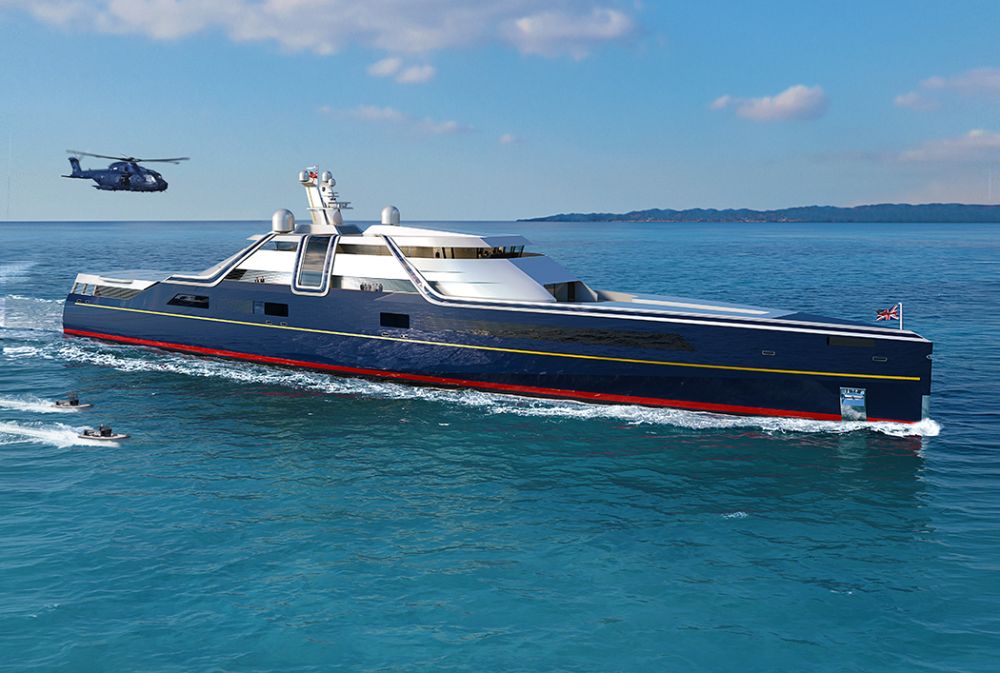
When the British government invited designers to devote their attention to the next Royal Yacht, replacing the venerable Britannia, Vitruvius Yachts, a London-based naval design studio launched and directed by Philipe Briand, presented its project, immediately placing it at the top of the list of competing designers.
The destiny of this future yacht was to encompass many vocations: as an itinerant ambassador, a reflection of English expertise and technology, perfectly in sync with its era thanks to its minor impact on the environment, zero carbon propulsion, and being modular in order to carry out all kinds of assignments from diplomacy to humanitarian, or receptions.
The project christened "Team FestivAl’s National Flagship" brought together the best enterprises and talents to ensure that this contemporary yacht would be exemplary in every respect.
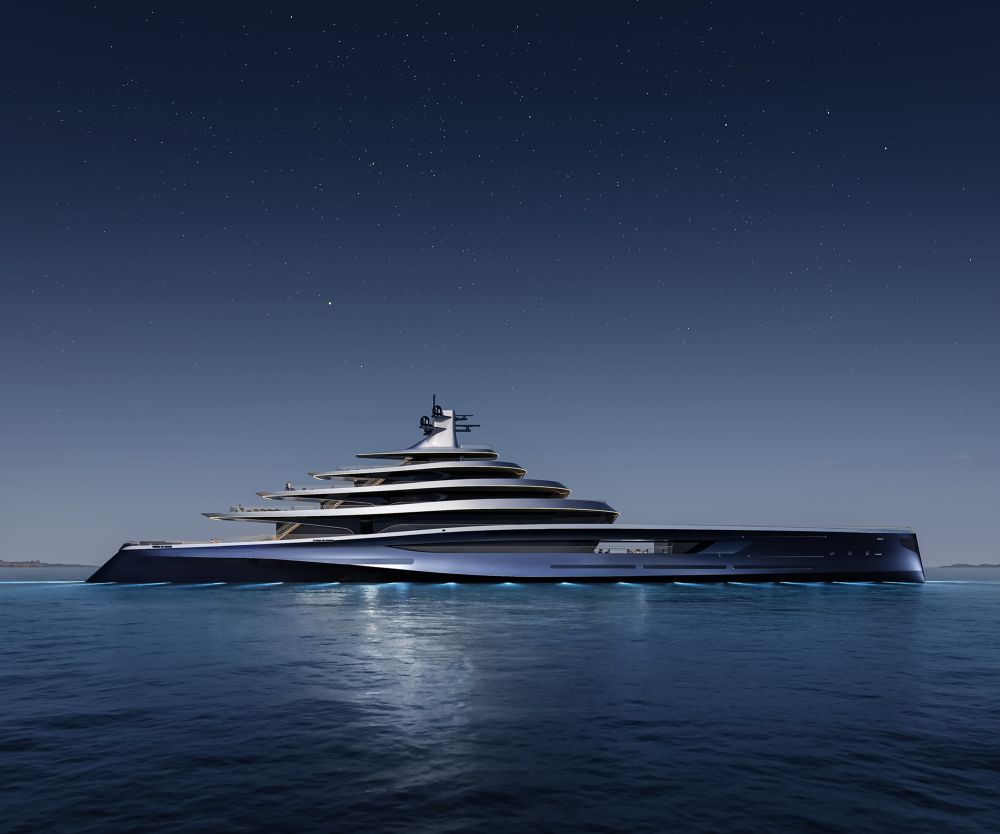
Dutch yacht builder Oceanco presented its AEOLUS Superyacht project at the Dubai International Boat Show. In homage to the Greek god, its curved linear profile which seems to have been sculpted by the wind leaves no-one indifferent.
AEOLUS lies at the crossroads of majestic elegance and structural efficiency, offering feminine curves but also clear signs of virility, achieving a subtle sense of balance.
This yacht of the future aims to be exemplary, using the most recent technologies for energy production and propulsion while retaining the possibility of adaptation to up-coming technical solutions. The design of its interior adopts the same approach, opting solely for natural or recycled materials, all perfectly traceable. Cactus leather alternatives by Desserto, for example, are given pride of place, contributing to the cocooning ambiance to which the decorator has given precedence.
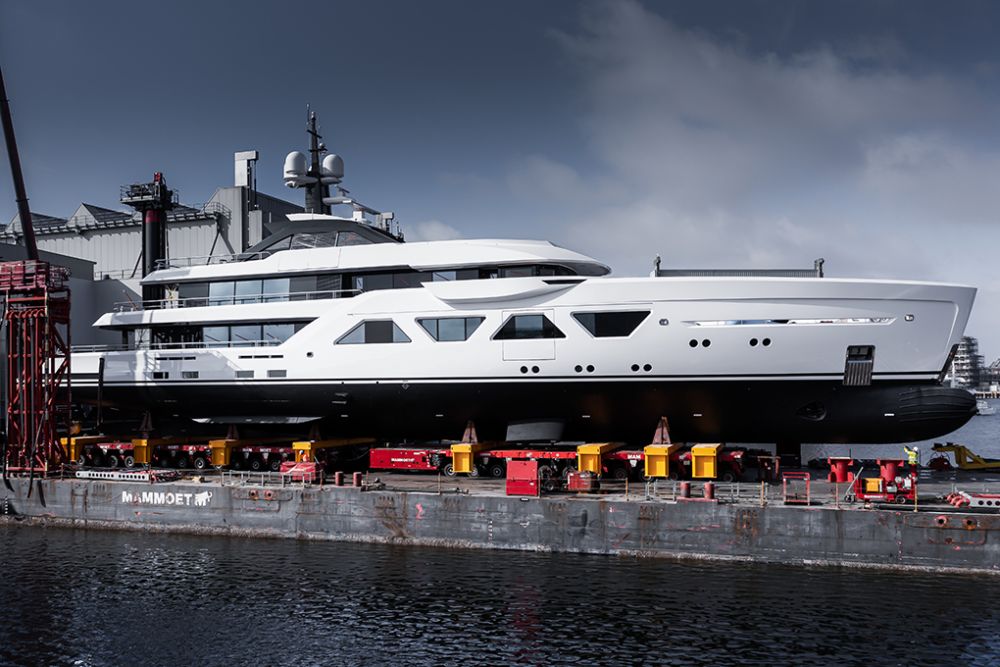
On March 3rd, the Dutch yacht builder Damen launched the third Amels 60. This 60-metre yacht embodies the very essence of the future of Superyachting.
Entrusted to the talented and creative Espen Oino, its design combines heritage from previous generations of yachts with the most recent developments. The Amels 60's wide success can be explained by its overall line, both classic and modern, and an interior giving an impression of spaciousness.
The exterior areas are just as generous with a vast sun deck, a bathing platform, and a retractable balcony for the owner's suite. Storage space is equally ample, enabling the yacht to accommodate a luxurious 9-metre tender beneath the fore deck.
State-of-the-art hybrid propulsion ensures that the yacht attains a high level of performance while offering admirable comfort.